- Home
- Lloyd Jones
A History of Silence Page 2
A History of Silence Read online
Page 2
There is a trick to opening that box which I will never get the hang of. It turns out that there are boxes within boxes, secret compartments that are tricky to get at.
Inside one of its drawers are some medals from the Boer War and a fob watch that belong to someone called Grandad. This person called Grandad is a bookseller.
I was once shown his photograph, or, more accurately, I remember seeing a photograph of someone called Grandad, a stranger who in fact is not my grandfather or father to my mother.
My mother’s father is a farmer, a figure even harder to believe in than this other one called Grandad, since he is hardly ever mentioned. Perhaps just the one time, but it sticks.
There are other, bigger mysteries, such as the absence of photographs of my parents as children.
The scar on my mother’s nose is another one of those things that is hard to explain. She is unsure how it got there; someone threw something at her or else she was thrown against something.
Sometimes I notice the scar. Most of the time I don’t. But when I do, it holds my attention. It is a scar from a particular moment, an accident or perhaps a mischief belonging to a world that has completely vanished. It is a curiosity in the manner of a fossil.
My mother has no idea what her father looked like. She never met him. She remembers her mother, Maud. In fact she spies on her, obsessively, although she rarely speaks of her.
In 1914, the year that Maud as a ‘fallen woman’ arrived in Wellington to give birth to my mother, my father was in the care of the city’s orphanage on Tinakori Road. He and his siblings were found milling around the body of their mother Eleanor Gwendoline (death by hydatids) in a flat in Kilbirnie. There are six of them: Percy, twins Gladys and Jack, Arthur and nine-year-old Laura, who is blind from—it is believed—‘a sand storm at Lyall Bay’ beneath the headland that eats the wind, and Lew, my father, who is one and a half.
While Maud is waiting to give birth to my mother, Laura is sent north to the Jubilee Institute for the Blind in Parnell, Auckland, where she is taught to recover the lost world by making shapes of people out of plasticine. After partially recovering her sight, she is placed in service on a farm in Te Puke. A year later she is sent for by an aunt in Melbourne, and Laura is never seen or heard of again. Arthur will do three years’ hard labour for breaking and entering. Gladys will file a restraint order against him visiting her. Arthur will disappear off to Canada, also never to be seen or heard of again. My grandmother is buried in an unmarked grave in Wellington’s Karori Cemetery, and forgotten. And Arthur Leonard Jones, the father of this mess, my grandfather, born in Pembroke Dock, Wales, will ‘drown at sea’.
I know just a bit more than that about the physical world I was born into, but it also has its mythic layers. The land was originally fished up from the sea. Our street abuts Taita, the ‘log jam’ in a gullet of land that spills out into Wellington Harbour in the shape of a fish mouth. The shoe factory, fifteen kilometres away in the heart of the city, is located in the roof of the mouth. The motorway connecting past and present lives, suburb and city, is the spine of the fish on whose back I swam into the world.
There are other creation myths to consider. As the last of a litter of five kids, rather than being told about the indecency of my mother’s late-in-life pregnancy, I am informed that I was found under a cabbage leaf.
It is the weekend, probably Sunday, because Dad is in the garden in his gardening boots and white singlet. I am also there, kneeling in the rich composted soil on the trail of myth, lifting up one fallen cabbage leaf, then another, a partially rotten one, to see if another kid happens to be lying there. I am fairly confident of finding someone because on the coast whenever I lift a rock I can always count on an indignant crab scuttling away from the sudden blast of daylight or a slimy fish wriggling deeper into the mud. Disappointingly, there is no one under this cabbage leaf, or that one. I look up to check with Dad. Through the thick smoke from the incinerator I catch the smile on his jokey bald head. Beyond his sunburnt shoulder, framed in the sitting-room window, is the watchful figure of my mother. Just then I feel as though I have stumbled on something, or glimpsed something for which at that particular moment there are no words like ‘cabbage leaf’ or ‘rock pool’. It lasts only a few seconds. Then my father begins to laugh. He shakes his head at me. By the time I turn back the watchful shadow has gone. The window is just a window, transparent, catching nothing but the passing clouds.
Half a lifetime later I arrived in Christchurch to find a city cracked open like eggshell in the earthquake and where I heard no laughter.
On 22 February 2011 there was a violent movement, like the snap of a shaken tablecloth. A city’s past now lay revealed, and it was not as most had imagined.
At the Bridge of Remembrance we stood as crowds once stood at the end of wharves to farewell passenger liners. In such a crowd in Auckland I had seen off my eldest sister, Pat, on the Castel Felice to Europe, then a place undetected in my consciousness. I had to climb over the back fence to look for Europe. I found it in a geography book recovered from the illegal rubbish tip in the wasteland behind our house. The pages were damp, and they smelt as I peeled them apart to find a flood plain in Holland. As often seems to happen with one discovery, several more followed. Soon after on Sunday morning radio I listened to the story of the boy who stuck his finger in the dyke. It was amazing to think that a boy’s finger stood between the ongoingness of life and its devastation.
For the moment we stared up at the glaring white side of the enormous ship. It seemed too big and too heavy to float. It sounded its horn, a tremendous joyful blast, and as it began to move away from the crowd I stared down at the weird and wonderful shapes and figures to be found in the oily darkness spreading from below the edge of the wharf, while my mother waved at the passengers on the upper deck, hoping to catch a final glimpse of her daughter.
At the Bridge of Remembrance the crowd stared at a vanishing city. Even a child who had been quarrelsome up to this point was content to push her cold pink fingers through the holes in the barrier.
The silence was that of concentrated effort to remember how things used to hold together. The place where days or weeks earlier a building stood was now an empty site. The change was abrupt and shocking. How small that space now seemed, too small to hold what they remembered had stood there.
Autumn rolled into winter, and memories continued to diminish until all that was left were a few details—the colour of an office wall on the third floor, a particular window view, perhaps a managerial sound in another office, the singular footfall on the steps leading down to the landing with the toilet where a cigarette could be smoked in the old days, not to mention the coded language of glances that buildings collect and come to know over time. The dreamt-of building continued to vanish over the passing weeks and months. The empty lots no longer caught the eye in quite the same startling way as they did that first time the wet clay foundations found the sky. And by spring, the memory of what had once stood barely competed with the diverting sight of a blackbird hopping across those same muddy foundations.
We had been the last to leave the wharf in Auckland. Mum and I waited, and even though my sister could not possibly pick us out on the wharf beneath the lit city, we stayed put. I wrapped my arms around myself to keep out the chill, and I knew better than to complain. The ship grew smaller, and disappeared altogether. Only then did we turn to leave. At last, it was time to eat something.
On a school trip to the future broken city, my classmates and I have stopped to listen to the sound of click click click. It is coming from a large wooden house. We point it out to the teacher. He appears to share our concern. He looks alert, then his jaw relaxes. The sound, he explains, is made by something called a ram. A ram is a device to draw up water. We look about the street and find elegant old wooden houses, trees, gardens, but there is no water to be seen. Such is the nature of spring water, he explains. It cannot be seen and that is why it is so good and pure. We stare b
ack at the elegant house with the sober veranda. Its iron roof is cracking in the heat. It is hard to believe that a stream runs beneath it.
We pile back onto the bus and go to a breakfast-cereals factory. There, we file by workers in white hair nets. All of them look hostile. And yet we are each given a free packet of cereal. This is fantastic. No one told us what to expect, but the free cereal is a highlight, no doubt about it. We wander on through the factory with our gifts of cereal until it begins to feel that we are the ones being processed. The noise involved in the manufacture of cereal is ear-splitting. A man in a white coat has to shout to be heard and we frown our way through the history of corn flakes.
It is a relief to get out of there, to the waiting sunshine. Especially as we happen to find ourselves in the ‘factory garden of the year’. The garden is on a rise—I can see across the plains to where the low hills shoulder the alps. I have the sense of being drawn out of myself to a more distant place. One day I will turn up to the gate of a farm where my mother’s father lived, but right now the scent of excitement is closer to hand. Outside the cereal factory there is a girl I like. Five or six of us are pretending to chase her. We could catch her easily if we wanted to, but then what would we do? She is all cotton shirt and bouncing hair and now and then a shrieking mouth. We are not sure where to touch. We just want to. Then the bus starts up and the spell is broken.
How strange to find it was ourselves, rather than the foreign victims we were more used to, fleeing the smoke and dust of disaster. I was watching the aftermath of the February earthquake on TV from the shoe factory in Wellington. And no matter how often I replayed the scene I felt the same astonishment. No one looks back at the ball of dust gathering at their rear. Nonetheless each one in that crowd carries a separate memory of the horrifying moment their world collapsed around them.
It is also clear that the young television reporter has never known anything quite like it. She hopes she will be able to hold her nerve. She must stop people where she can, and ask them what they have seen.
There is a wild lurch. The screen fills with the side of a building, then the trembling ground, now a longer view of the road and the crowd hurrying out of the smoke. And the aftershock passes.
Then a man in a headband jogs into the picture. He stops, looks around, jogs on, stops again. He is on his lunch-hour run, like any other day, I suppose that’s what he thinks, and now he doesn’t know whether to continue on as a jogger, or a victim or a witness. But, ludicrously, and all this time later, it still annoys me that he jogged on the spot as if waiting for the traffic lights to change, while behind him water mains burst, sewerage systems collapsed, vehicles pitched into sinkholes, houses slid over cliffs, ancient sandhills pushed up through layers of tarseal, and the city’s battlements of masonry and plaster collapsed into its streets. At the same time, he offered some reference point because the television camera seemed to inhabit him, and so when he turned we saw through his eyes that enormous cloud of dust and, emerging out of it, a crowd of people. I was surprised by how composed they appeared, but now I wonder if it was shock I saw, that an internal rumbling had frozen them into stately repose as a way of retaining their dignity while their city collapsed around them. Then, at last the jogger succumbed to the moment to look decently confused, and lost. He put his hands on his hips as if at the end of a long race and raised his eyes skyward.
Was it that day, or the day after? An expat BBC radio producer rang to ask if I would write something about the earthquake in Christchurch to be read over the air. He said this sort of thing isn’t supposed to happen in New Zealand. And when he said, ‘It’s like a movie’, I knew exactly what he meant, even if he had the disaster genre in mind. I happened to be thinking more about my own relationship to the event, and how a movie manages to juggle notions of artificial presence and engagement with action that is unfolding in another time and place.
The producer asked if I would write about what the country was going through. After giving it some thought I decided that I couldn’t—a person in the far north of the country, or for that matter in London, had a relationship with the earthquake that inevitably was different from that of someone thrown to the ground near its epicentre. How could one speak for all? It depended on one’s proximity to the event as well as one’s inner constituency. My own response comprised a profound sorrow for the plight of my countrymen and, more surprisingly, a bunch of memories that had come upon me in no particular order but indiscriminately, as though flushed up from unsettled sediment within.
Still, it was nice to be asked, if appalling to think about it in such a way. At the time of the invitation the death toll was rising; limbs were being amputated to free people from the wreckage. Now, this morning, a year and a few months after the February quake, I read of a survivor, who had lost both legs in the collapse of the Pyne Gould Corporation building, preparing to take part in this year’s New York marathon in a wheelchair. It occurred to me that he was probably lying trapped in building rubble when the producer had called up as you might for a plumber or a serviceable handyman ready to start work at a moment’s notice.
I was not the person the producer was after. I was on the edge of my seat, in front of the screen, remote in hand, nodding dumbly into the phone. But he was right to compare the scenes to a movie. They released a personal catalogue of horror that raced to the surface of my being in exactly the same way as those I had witnessed on the unscripted face of the young television reporter—things that I hadn’t given a thought to, not for years, events long since buried by subsequent experiences—and I found myself thrown off-balance by this loosening of self.
There on television were flood-lit pictures of rescuers digging with their hands into piles of broken timber and masonry. I found myself isolated by my own memories, some of which were banal, almost unutterable and worthless, certainly nothing to blurt out to the producer calling from London, still there on the line, patiently waiting as my tradesman’s thoughts migrated in their wild way through a progression of horror beginning with my first time at the butcher’s. The transition from the street, pushing through the curtain of red and blue streamers, is shocking. One moment I am with Mum outside in the summer under blue sky and white cloud and in the murmuring warmth of the footpaths, and the next I am surrounded by bloody body parts with pleasant-sounding names, decorated with bits of fern and parsley. My mother, on the other hand, looks over the bits of carcass as she does when she picks up something at the beach, with a keen interest tucked inside a thin public smile. The butcher’s apron, I notice, is splattered with blood. So are his hands which he has slapped onto his hips. I look back at the curtain of cheerful red and blue streamers. I am slowly arriving at the idea of deception—that deception is one of the hinges the world swings back and forth on. The tidy world of asphalt and lawn is out there. In here, butchered flesh. As I remember it, I escaped to the blinding sunshine outside and the promise of a lemonade iceblock. And the carnage I saw around this time. A smash up by Waterloo Bridge in the Hutt. Two mangled bits of steel, an amazing amount of broken glass, the smell of petrol, a tide of human blood—and the slow wailing sirens and the pointlessness of the policeman alone at the scene pushing at the air with his hands.
And then, in a calmer moment, after I’d told the producer I would get back to him and had put the phone down, I sat stone still, struck by something unexpected and heard again, I suppose for the tenth, twentieth or hundredth time—the gun shot. The episode unfolds always in the same way. I look at the clock. And seeing it is 2 a.m. feel a bit sour. I pull on a pair of jeans and a shirt. The apartment is in the Western Addition, one of the dodgier neighbourhoods of San Francisco. I have heard that the cops don’t like to come here at night. But, down on the street, there they are. A police car has driven up onto the footpath. Two cops are shining torches in the window of the Palestinian corner store. A black man is sitting on the edge of the footpath. He looks up at me. His eyes are glassy. Then I notice the red hole in the chest of his w
hite shirt. It occurs to me that I have seen this before, and I have, perhaps a hundred or maybe even a thousand times before, to the point where it ceases to shock, and I have forgotten how to feel. The instinctive horror I felt the first time I entered the butcher shop has exhausted itself. So when the producer said of the earthquake, ‘It’s just like a movie’, I did know what he meant, except this time it was different.
This was a real disaster. Equally, it was plain to see that it had come out of an unacknowledged past. The old maps clearly spelt out the swamp and wetland history of the city’s foundations. But that had been overlooked or perhaps was thought to have been triumphed over by advances in swamp-draining techniques, then covered up with concrete and bitumen.
Within days of the earthquake, posters advising drop off points for clothes and food and other supplies went up on walls and lampposts across Wellington.
One lunch hour I joined a long line of people at the entranceway to Pipitea Marae to drop off a couple of cartons of men’s razors and toiletries that I’d been told were in short supply. The organisation and efficiency of the operation were impressive. Everyone seemed to know instinctively what to do. An older Maori woman came up to me and inquired compassionately, ‘Where are you from, dear?’ A number of people escaping Christchurch, including foreign tourists, had spent the night in the marae on their way north. I think she had confused me with one of them. I was sorry to disappoint her. I was only here to help. Then she asked if she could make me a cup of tea. She too wanted to help—anyone that she could. I politely declined, and she said, ‘God bless you.’
A few days after the massive Napier earthquake in 1931 my father cycled 385 kilometres to help with the clean up. I had always known this, although like many things that I know I don’t remember ever being told. It was one of those things one absorbs, like knowing the sky is filled with stars, without the need of someone pointing it out.

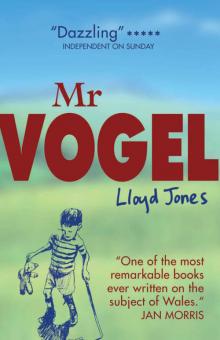 Mr Vogel
Mr Vogel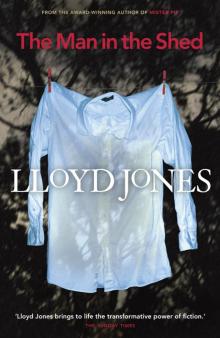 The Man in the Shed
The Man in the Shed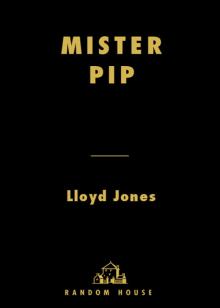 Mister Pip
Mister Pip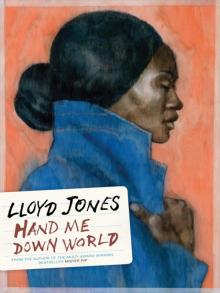 Hand Me Down World
Hand Me Down World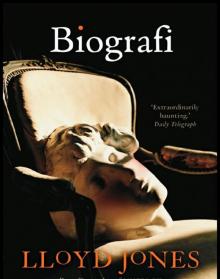 Biografi
Biografi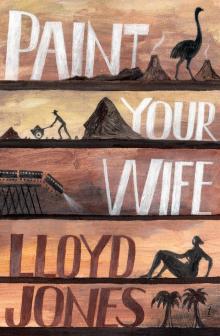 Paint Your Wife
Paint Your Wife Here at the End of the World We Learn to Dance
Here at the End of the World We Learn to Dance My First Colouring Book
My First Colouring Book Mr Cassini
Mr Cassini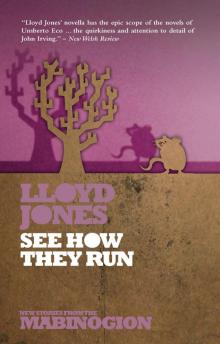 See How They Run
See How They Run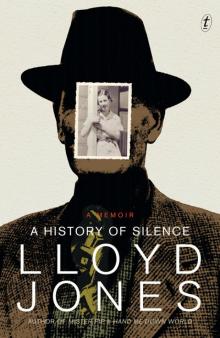 A History of Silence
A History of Silence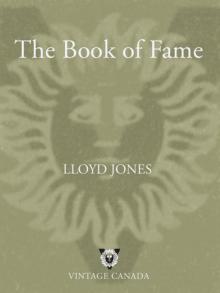 The Book of Fame
The Book of Fame